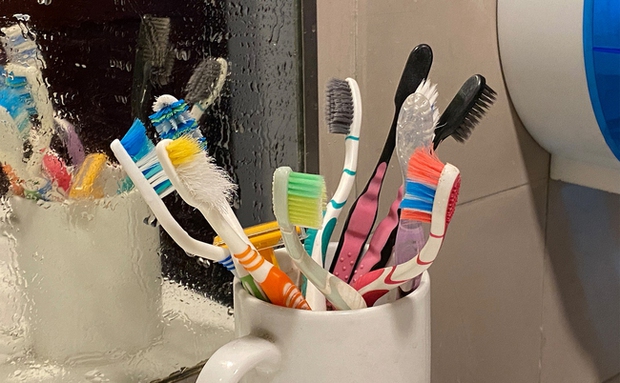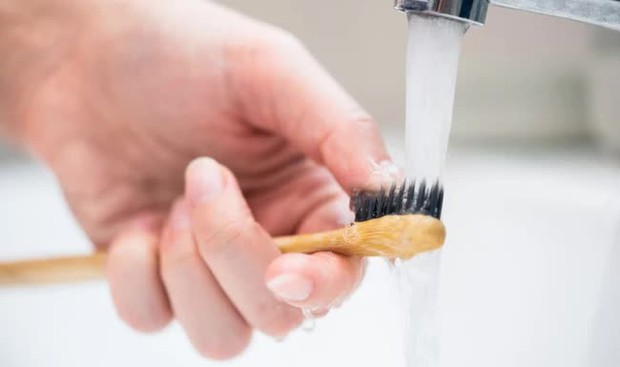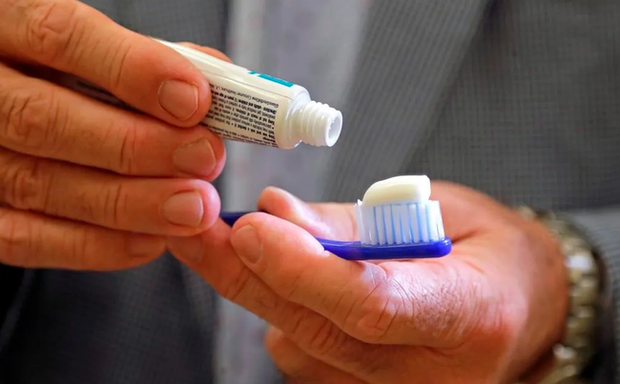Placing this item in the bathroom, don’t ask why you keep falling ill, sometimes it’s even dirtier than the toilet bowl.
This item should not be placed in the bathroom because it affects health when used, even causing illnesses and leaving regrettable consequences.
The bathroom, or restroom, is an indispensable room in every home. Its primary function is for personal hygiene, bathing, and other related activities. Consequently, bathrooms tend to harbor the most dirt in the house due to their persistent dampness, making them a breeding ground for various disease-causing bacteria.
Due to constant use, many households have a habit of placing items and everyday utilities in the bathroom for convenience. However, few realize that this seemingly normal practice can affect the health of the entire family, even leading to severe illnesses.

Placing personal hygiene items in the bathroom is a common habit for many people.
Essential items commonly found in the bathroom include the toilet bowl, sink, faucet, or personal hygiene tools like toothbrushes and face towels. Many people believe that, given their function, the toilet bowl is the most bacteria-infested area. However, some studies have shown otherwise.
Results from several studies reveal that over time, toothbrushes are the most susceptible to accumulating a high level of bacteria. After each use, they accumulate additional bacteria, which, if not properly cleaned, creates an environment for disease to flourish.
Why can a toothbrush in the bathroom be extremely dirty?
According to a study by Case Western Reserve University School of Dental Medicine (USA), there are approximately 700 microorganisms including bacteria, viruses, protozoa, and fungi in the mouth of every person. When checked, every 100ml of our saliva contains up to 100 million bacteria from 600 different species.
Thus, every time we brush our teeth, these bacteria transfer from our mouths onto the toothbrush and into the surrounding environment. Combined with the damp environment of the bathroom, these bacteria thrive, turning the toothbrush into an extremely dangerous bacterial hotspot, negatively impacting health.

Toothbrushes actually harbor more bacteria and germs than you think.
For convenience, people often place their toothbrushes in the bathroom, either near the sink or the toilet bowl. However, when we flush water after using the toilet, bacteria are released into the air and can stick to the toothbrush. Over time, the number of bacteria on the toothbrush can even surpass that found in the toilet bowl.
Furthermore, storing the toothbrushes of different household members close to each other increases the likelihood of spreading bacteria. This negatively affects oral health, leading to tooth decay and gum inflammation.
According to a study by Quinnipiac University (USA), no matter how well you clean the bathroom, your toothbrush has a 60% chance of becoming contaminated. If shared with others, especially in the bathroom, the risk increases to 80%.
Be mindful of cleaning your toothbrush daily to avoid falling ill.
How should you store a toothbrush in the bathroom?
For these reasons, it’s crucial to keep toothbrushes clean at all times. Experts suggest that if the bathroom is often damp, toothbrushes should be kept outside in a dry place or on a wall shelf. They should never be placed near the toilet bowl or the sink, and the brush heads should face upward to prevent bacteria from adhering.
Additionally, if you brush your teeth three times a day, consider replacing your toothbrush monthly. If you have dental or gum diseases, it’s best to replace it every three weeks. If you’re experiencing a cold or other contagious illnesses, it’s advisable to change your toothbrush after recovery.
Moreover, you can soak the toothbrush in boiled water to eliminate bacteria. Although this method can damage the bristles, it’s highly effective at eliminating bacteria. It should only be done once a week to extend the toothbrush’s lifespan and prevent damage.

A long-used toothbrush can accumulate a significant amount of bacteria and debris. Therefore, replacing your toothbrush every 3 to 4 months is an effective way to protect oral health and minimize the risk of tooth decay, gum inflammation, and disease.












